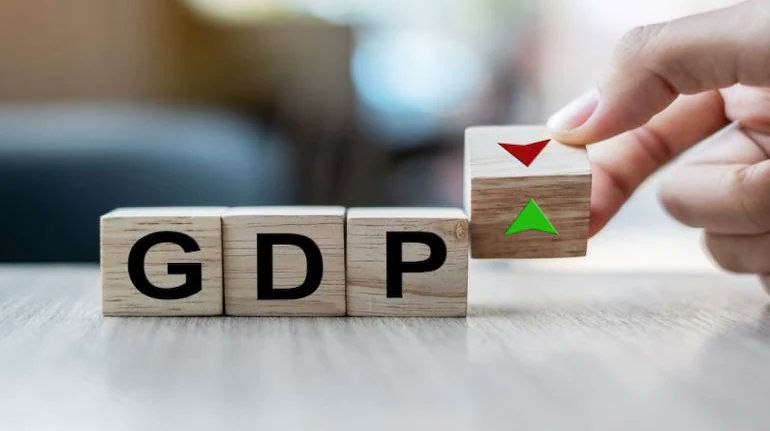New Delhi, NFAPost: Reeling under Covid-19 pandemic, India’s gross domestic product (GDP) grew at 1.6% in the fourth quarter ending March of the fiscal year 2020-21, states. But the economy contracted 7.3% for the entire fiscal year, showed the National Statistical Office data released on Monday.
According to analysts, this is the first full-year contraction in the Indian economy in the last four decades since 1979-80, when GDP had shrunk by 5.2%. This is also the second straight quarter of expansion since India exited a rare recession.
India’s GDP figures showed growth at 3% in Q4 of FY20, while growth for FY20 came at 4%, an 11-year low. The government data states that gross value added (GVA) growth in the manufacturing sector accelerated to 6.9% in the fourth quarter of 2020-21 compared to a contraction 4.2% a year ago.
Farm sector GVA growth was down at 3.1%, compared to 6.8% in the corresponding period of 2019-20. Construction sector GVA grew by 14.5% from 0.7% growth earlier. The mining sector shrank by 5.7% , as against a contraction of 0.9% a year ago.
Electricity, gas, water supply and other utility services segment grew by 9.1% in the fourth quarter, against 2.6% expansion a year ago. Similarly, trade, hotel, transport, communication and services related to broadcasting contracted by 2.3% in the fourth quarter from 5.7% growth earlier.
Financial, real estate and professional services grew by 5.4% in Q4 FY21 from 4.9% growth. Public administration, defense and other services growth fell to 2.3% during the quarter under review, from 9.6% a year earlier.
“Real GDP or Gross Domestic Product (GDP) at Constant (2011-12) Prices in the year 2020-21 is now estimated to attain a level of ₹135.13 trillion, as against the First Revised Estimate of GDP for the year 2019-20 of Rs 145.69 trillion, released on 29th January 2021. The growth in GDP during 2020-21 is estimated at -7.3% as compared to 4.0% in 2019-20,” said the Ministry of Statistics & Programme Implementation in a statement.
“GDP at constant (2011-12) prices in Q4 of 2020-21 is estimated at Rs 38.96 trillion as against Rs 38.33 trillion in Q4 of 2019-20, showing a growth of 1.6%.”
The statement said the measures taken by the government to contain the spread of the pandemic have had an impact on economic activities as well as data collection mechanisms.
To regain Rs 145 trillion size, the economy will have to grow by 10-11% in the current 2021-22 fiscal but the outbreak of the second wave of Covid-19 infections last month has disrupted the momentum of economic activity and many expect the GDP may not touch double-digit growth rate despite the low base.
GDP is derived as the sum of the gross value added (GVA) at basic prices plus all taxes on products less all subsidies on products. The total tax revenue used for GDP compilation includes non-GST revenue and GST revenue.
“The measures taken by the government to contain the spread of the Covid-19 pandemic have had an impact on economic activities as well as on data collection mechanisms,” said a statement issued by the NSO.
India has recorded 28 million Covid-19 infections, behind only the United States, and 329,100 deaths as of Monday, although the rise has begun to slow.
The sectoral performance in Q4FY21 reveals that there was definitely a recovery in manufacturing, construction and finance, real estate etc numbers, which would have boded well for FY22. However, with the second wave leading to a closedown of the services sector, in particular, progress might remain muted.
The economy snapped out of technical recession in the October-December quarter of the financial year 2020-21 and expanded by a revised 0.5%, after reporting two consecutive quarters of de-growth in the same fiscal. The GDP contracted by 7.3% in the September quarter (second quarter) of the fiscal year 2020-21. The next release of quarterly GDP estimates for the quarter April-June 2022 (Q1FY22) will be on August 31, 2021.
The NSO had projected a GDP contraction of 7.7% in 2020-21 in its first advance estimates of national accounts released in January this year.
The NSO, in its second revised estimates, had projected a contraction of 8% for 2020-21. China has recorded a 18.3% growth in January-March 2021.





